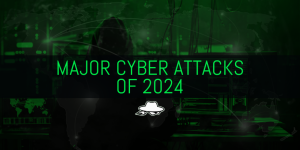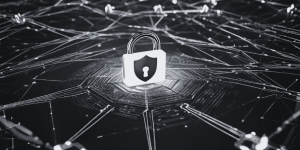Cyber Threats of Tomorrow: Are You Ready for What’s Next?

Reading Time: 3 Minutes
Introduction
Emerging technologies bring immense opportunities but also open doors to advanced and unpredictable cyber threats. From artificial intelligence to quantum computing, tomorrow’s threats require vigilance, adaptation, and innovation. Are you prepared for what lies ahead?
The Rise of Emerging Cyber Threats
Advanced Persistent Threats (APTs)
APTs are not new, but their sophistication is reaching unprecedented levels, according to Private Internet Access (PIA). These threats are prolonged and targeted attacks typically orchestrated by well-funded cybercriminal organizations or nation-states. Leveraging advanced techniques such as social engineering and zero-day vulnerabilities, APTs often bypass traditional security measures to gain prolonged access to sensitive systems.
How to Prepare:
- Continuous Monitoring: Employ real-time monitoring tools to detect unusual activities.
- Behavioral Analytics: Use AI-driven analytics to recognize patterns associated with APTs.
- Incident Response Plans: Develop and regularly update response protocols to minimize damage.
AI-Powered Cyber Attacks
Artificial intelligence is a double-edged sword. While it empowers cybersecurity tools, it also equips cybercriminals with unprecedented capabilities. AI can automate phishing campaigns, create deepfake content, and identify vulnerabilities at an alarming rate. AI attackers can also adapt quickly to defensive measures, making traditional cybersecurity solutions obsolete.
How to Prepare:
- AI Defense Systems: Invest in AI-driven threat detection and response tools.
- Employee Training: Educate teams about identifying AI-driven scams, such as deepfakes and AI-generated phishing emails.
- Collaboration: Share threat intelligence with industry peers to stay ahead of new techniques.
See Also: So you want to be a hacker?
Offensive Security and Ethical Hacking Course
The Role of Emerging Technologies in Shaping Threats
Quantum Computing: A Game Changer
Quantum computing promises revolutionary advancements, but it also poses significant risks to cybersecurity. Quantum computers can potentially break current encryption standards, exposing sensitive data and undermining secure communications.
How to Prepare:
- Quantum-Resistant Encryption: Transition to post-quantum cryptographic algorithms.
- Strategic Partnerships: Collaborate with organizations specializing in quantum cybersecurity.
- Regular Audits: Assess the quantum-readiness of your encryption systems.
Internet of Things (IoT) Vulnerabilities
IoT devices are becoming ubiquitous in homes and workplaces, creating a vast attack surface for cybercriminals. These devices often have weak security protocols, making them prime targets for botnets and ransomware attacks.
How to Prepare:
- Device Segmentation: Isolate IoT devices on separate networks.
- Firmware Updates: Ensure all devices have the latest security patches.
- Strong Authentication: Use multi-factor authentication for IoT device access.
Future Cyber Threats to Watch
Biometric Data Theft
Biometric data, such as fingerprints and facial recognition, is increasingly used for authentication. However, it cannot be “changed” like a password if compromised. Cybercriminals targeting biometric databases could create long-term identity risks.
How to Prepare:
- Data Encryption: Encrypt biometric data both in transit and at rest.
- Anonymization: Store biometric data in a way that makes it non-identifiable if stolen.
- Redundancy: Use multi-factor authentication that combines biometrics with other secure methods.
Autonomous Systems Exploitation
Autonomous vehicles, drones, and robots are becoming more common. These systems rely on complex algorithms and networks, making them susceptible to hacking. A compromised autonomous vehicle, for example, could cause catastrophic damage.
How to Prepare:
- Security-by-Design: Ensure security is integrated into the development of autonomous systems.
- Penetration Testing: Regularly test these systems for vulnerabilities.
- Regulatory Compliance: Adhere to emerging standards for autonomous system security.
Building a Resilient Cybersecurity Strategy
Proactive Threat Hunting
Traditional reactive approaches are no longer sufficient. Proactive threat hunting involves actively searching for signs of compromise within systems before an attack occurs.
Key Steps:
- Threat Intelligence: Use real-time data to identify emerging threats.
- Expert Teams: Employ skilled analysts to identify and mitigate risks.
- Advanced Tools: Leverage AI and machine learning to predict potential attack vectors.
Embracing Zero Trust Architecture
Zero trust operates on the principle of “never trust, always verify.” This model assumes that threats could exist both inside and outside the network and, therefore requires stringent access controls.
How to Implement:
- Micro-Segmentation: Divide networks into smaller segments to limit lateral movement.
- Continuous Verification: Regularly authenticate users and devices.
- Strong Policies: Implement robust access policies and enforce least-privilege principles.
Cybersecurity Awareness and Training
Human error remains a significant factor in most cyber breaches. Regular training and awareness programs can help mitigate phishing, social engineering, and insider threats risks.
Best Practices:
- Interactive Training: Use gamification to engage employees in learning.
- Regular Updates: Keep employees informed about the latest threats.
- Simulated Attacks: Conduct phishing simulations to test awareness.
The Importance of Collaboration and Innovation
Industry Partnerships
Collaborating with industry peers, government agencies, and cybersecurity experts can strengthen defenses. Sharing intelligence and best practices creates a unified front against cybercriminals.
Investing in R&D
Innovative solutions often arise from robust research and development efforts. Businesses should allocate resources to explore new technologies, such as AI and blockchain, for enhancing cybersecurity.
Global Regulations
Harmonizing cybersecurity laws and regulations across borders is crucial for addressing global cyber threats. International cooperation ensures that cybercriminals cannot exploit legal loopholes in different jurisdictions.
Conclusion: Staying Ahead of Tomorrow’s Threats
The cyber threats of tomorrow are complex and evolving. They demand a proactive, comprehensive, and collaborative approach to cybersecurity. By staying informed, embracing innovative technologies, and fostering a culture of vigilance, individuals and organizations can prepare for what’s next in the ever-changing digital landscape. Are you ready to face the future of cybersecurity?
This article is written by Steve Wilson
Are u a security researcher? Or a company that writes articles about Cyber Security, Offensive Security (related to Information Security in general) that match with our specific audience and is worth sharing? If you want to express your idea in an article contact us here for a quote: [email protected]


















